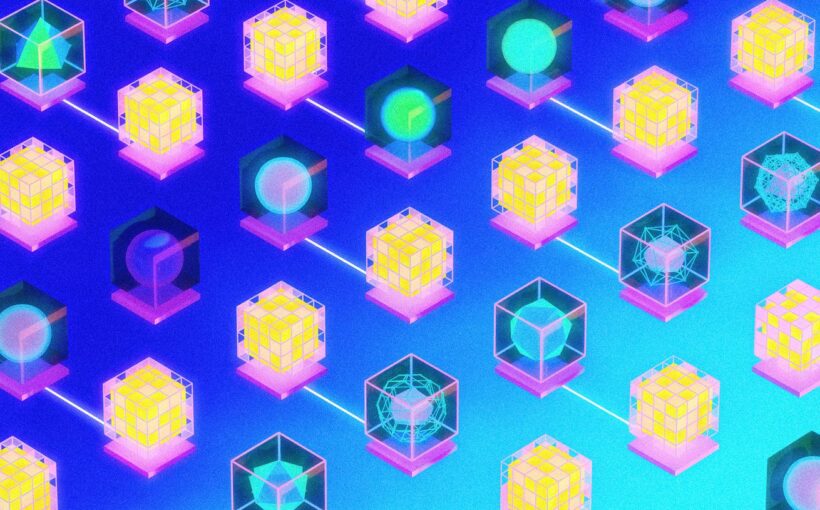In the technology world, especially in the IT, we are accustomed of hearing some new buzzwords every year. And then we get bombarded with those wherever we go. Most of them goes to the trash in a years’ time, except only a few of those survives and becomes part of our vocabulary. Now the buzzing word of 2022 is not AI or Blockchain, nor even Crypto. It is indeed NFT – Non-Fungible Tokens.
SwissCognitive Guest Blogger: Utpal Chakraborty, Chief Digital Officer, Allied Digital Services Ltd., AI & Quantum Researcher – “How NFTs and Web3 is going to Threaten the Traditional Finance”

Academic definition of Non-fungible Token or NFT is – NFTs are a new class of digital assets that are unique, indivisible, and immutable. NFTs represent ownership of digital assets on the blockchain ecosystem.
In fact, they can be used to represent ownership of any unique asset, such as a certificate for an object in the digital or physical realm. NFTs are digital asset representations that are likened to digital passports because each token contains a unique, non-transferable identification to distinguish it from other tokens. Unique NFT data makes it easy to verify ownership and transfer tokens between owners while transacted. They contain ownership information for easy identification and transfer of tokens between token holders.
The most important thing that we need to know is NFTs are unique cryptographic tokens that exist on the blockchain and cannot be replicated. They were originally useful for trading digital assets, and now they have multiple use cases. NFTs are mostly built on the blockchain, which makes up the majority of ERC-721 tokens (a standard for representing ownership of non-fungible tokens).
NFTs offer record-breaking immutability and unique ownership features, represent someone’s ownership of digital assets such as social media posts, digital art, paintings, signatures, and more. They have unique properties such that they cannot be traded or exchanged for other assets with the same financial value due to the non-fungibility in nature. In other words, NFTs are non-fungible tokens and assets on the blockchain with unique characteristics, information and metadata that distinguish them from millions of other assets. This makes NFT digital assets completely different.
In addition to tokenizing intangible digital content, NFTs can also represent a tokenized version of real assets, including land and buildings. NFTs provide undeniable proof of ownership that is safer than any deed to land. As NFTs get integrated into financial infrastructure, it will be possible to implement the same concept of tokenized parcels of land and its value and location in the physical world.
In the future, digital real estate mainly refers to the ownership of digital assets, and each NFT owner will have a place in Metaverse. You can use NFTs to fully own the virtual space in the metaverse. This means that NFTs in Metaverse can represent ownership of anything, including game assets, avatars, and real estate. Metaverse assets can be traded using Metaverse coins as NFTs.
Metaverse, along with DeFi (Decentralized Finance) and NFTs (Non-Fungible Tokens), has real-world use cases in the virtual world for the Finance Industry.
As the gaming industry has already demonstrated that the money-making gaming system will bridge the gap; and NFTs will pave the way for exchange of contracts in the Metaverse marketplace and many more use cases linked to financial industry and others. Among all the technological breakthroughs, NFTs will disrupt the traditional metaverse paradigm of user interaction, socialization, and social commerce.
Also, all these are intimately associated with Web3, and AI is in built in Web3. So, AI is definitely going to bring that Intelligence for which it’s made for. But this time AI is not in the centre of the stage, rather it’s an enabler in a Web3 kind of an ecosystem. Having said that, AI is going to play a major role from the background to make the Metaverse and Web3 environment intelligence and user friendly.
Beyond the hype associated with multi-million dollar sales of digital art, avatar etc. ; the utility of NFT will be to create something that resembles a genuine human society based on free trade of goods, services or ideas and most importantly the radical concept like “Social Contracts”. By providing a digital representation of physical assets, NFTs are going to represent a step forward in rethinking modern financial systems.
Nevertheless, NFTs are already a key component of the emerging Metaverse, where feasibility relies heavily on asset tokenization. Non-fungible tokens and the technology behind NFTs play a critical role in the evolution of the Metaverse. Non-fungible token, meaning digital records of ownership stored on a blockchain will become the centrepiece of a functional economy, allowing for the authentication of assets, ownership, and even identities. Hence, I see a great future of NFTs in the emerging virtual world (Metaverse) and it’s utility pertaining to financial industry in the virtual universe.
Der Beitrag How NFTs and Web3 is going to Threaten the Traditional Finance erschien zuerst auf SwissCognitive, World-Leading AI Network.
Source: SwissCognitive



